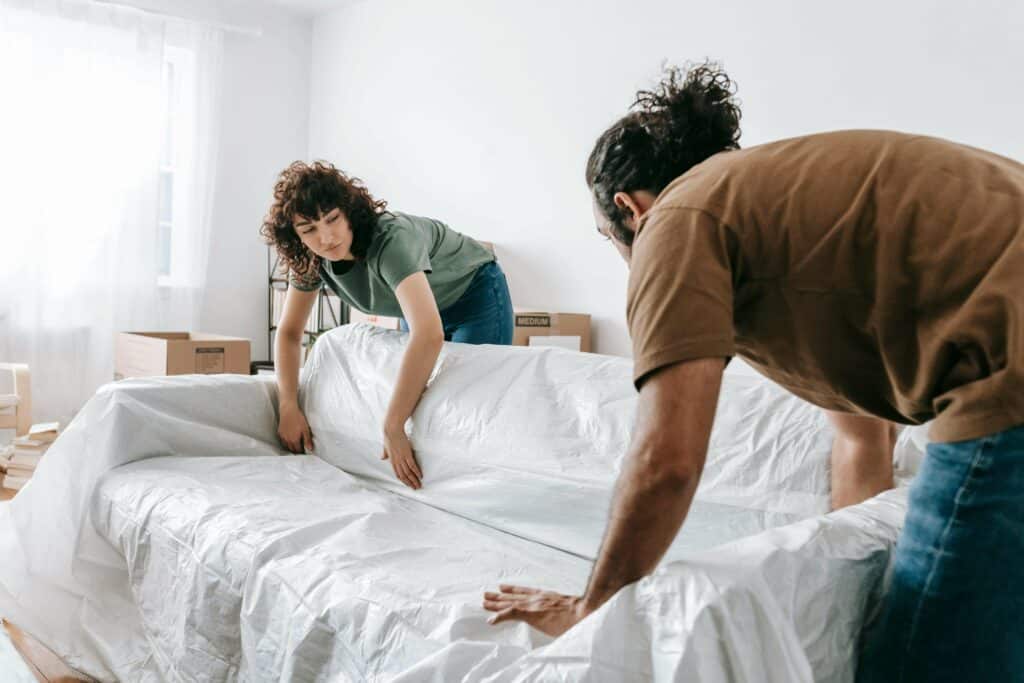Thinking of moving antique furniture but not sure what the safest way of doing so is? Don’t worry, the experts at Village Vintage are on hand to help! Unlike modern pieces, antiques are often more fragile and valuable, requiring special care and attention. So, whether you’re relocating to a new home or simply rearranging your space, following these tips can help ensure your cherished items arrive safely and in pristine condition.
-
Plan Ahead
If you’re able to do so, planning is crucial when moving antique furniture. Begin by assessing the size and weight of each piece to determine the best method for transport. Consider the following steps:
- Create an Inventory: Make a list of all the antique items you need to move. Note any special characteristics or existing damage.
- Measure Doorways and Hallways: Ensure that your furniture can fit through all doorways and hallways in both the current and new locations. This will help you avoid any last-minute surprises.
- Clear Pathways: Ensure you have clear pathways to move your items safely. Plan your routes around items that can’t be moved. Roll rugs and carpets out of the way to avoid snagging and tripping.
- Gather Supplies: You’ll need sturdy boxes, bubble wrap, packing paper, moving blankets, furniture pads, and high-quality packing tape. For larger items, consider renting moving equipment like dollies or hand trucks.
-
Disassemble When Possible
If your antique furniture can be safely disassembled, it’s worth considering. Removing legs, drawers, and other detachable parts can make the pieces easier to handle and less likely to incur damage. Remember to:
- Label Parts: Use masking tape and a marker to label each part and its corresponding piece of furniture. This will simplify reassembly.
- Store Hardware: Place screws, nuts, and other small components in labelled plastic bags and tape them securely to the underside of the furniture or keep them in a designated box.
-
Protect Fragile Items
Antique furniture often features delicate elements like glass, mirrors, or intricate carvings. To protect these fragile components:
- Wrap Glass and Mirrors: Use bubble wrap and packing paper to wrap glass surfaces, items and mirrors. Add a layer of cardboard for extra protection and mark these items as ‘fragile’.
- Cover Carvings: Wrap delicate carvings and embellishments with bubble wrap, securing it with tape without applying it directly to the wood to avoid damage.
-
Use Proper Lifting Techniques
Improper lifting techniques can damage both the items and your back. Follow these guidelines for safe lifting when moving antique furniture:
- Lift with Your Legs: Bend at the knees, not the waist, and use your leg muscles to lift and support heavy items.
- Keep the Item Close: Hold the furniture close to your body to maintain balance and reduce strain.
- Use Teamwork: For large or heavy pieces, enlist the help of friends or professional movers. Coordinate your movements and communicate clearly to avoid accidents.
- Don’t Drag: Always maintain a firm grip on the object’s base when moving it and lift don’t drag. Dragging a piece of furniture on any flooring or carpet can damage it. Not to mention, the vibrations will shake parts loose, damage the joints, break furniture legs, etc.
-
Don’t Rush
- Take Your Time: Not only could you hurt yourself, but antique furniture is fragile. Move slowly to avoid hitting wall corners, other furniture edges, stairwells, doors, or even the truck ramp or walls. Better to be slow and safe than sorry!
- Using a Dolly: If your antique furniture can be put on a dolly, you can do so. You’ll have more control over its weight and keeping it stable will be easier.
-
Pack Securely
When packing antique furniture for transport, it’s essential to ensure each piece is well-protected and stable:
- Wrap Furniture: Use moving blankets or furniture pads to wrap each piece. Secure the blankets with packing tape or plastic wrap, making sure the tape doesn’t come into direct contact with the furniture’s surface.
- Protect Corners: Pay special attention to corners and edges, which are prone to damage. Use corner protectors or additional padding to safeguard these vulnerable areas.
- Stabilise Items in Vehicles: For transportation, load the heaviest items first, placing them against the walls of the vehicle for stability. Use straps or ropes to secure the furniture and prevent shifting during transit.
-
Consider Professional Help
While DIY moving can save money, hiring professional movers who specialise in moving antique furniture might be worth the investment. Professional movers have the expertise and equipment to handle delicate items safely. When choosing a moving company:
- Research and Reviews: Look for movers with experience in handling antiques and read reviews from previous customers.
- Insurance: Ensure the moving company offers insurance that covers antique furniture in case of damage during the move.
-
Climate Control
Antique furniture is often sensitive to temperature and humidity changes. To protect your pieces:
- Avoid Extreme Temperatures: Don’t leave antique furniture in a hot or cold moving truck for extended periods of time. Once the destination is reached, get the antiques out of the vehicle.
- Use Climate-Controlled Storage: If you need to store your furniture temporarily, choose a climate-controlled storage facility to prevent warping, cracking, or other damage.
-
Unpacking and Reassembly
Once you’ve arrived at your destination, take your time unpacking and reassembling your antique furniture:
- Inspect for Damage: Before unpacking, inspect each piece for any signs of damage that may have occurred during the move. Not doing so can incur more issues further down the line.
- Reassemble Carefully: Follow your labelled parts and notes to reassemble disassembled items. Take care not to over-tighten screws, which can crack or split the wood.
- Clean and Maintain: After reassembly, give your furniture a gentle cleaning with appropriate products to remove any dust or residue from the move.
- Ongoing Care: Once your furniture is in place, proper care should be continued, use a soft cloth to dust your furniture regularly and be sure to keep away from direct sunlight to promote longevity. For more information on cleaning antique furniture, take a look at our recent blog here!
Get in Touch
So, if you’re moving antique furniture, you now have all the information you need to know! If you’re thinking of investing in some beautiful antique and vintage items for your home or business, Village Vintage would love to help! We are passionate about delivering the best results for our valued customers. Simply get in touch with us by filling out our contact form and one of our friendly team will get back to you.






